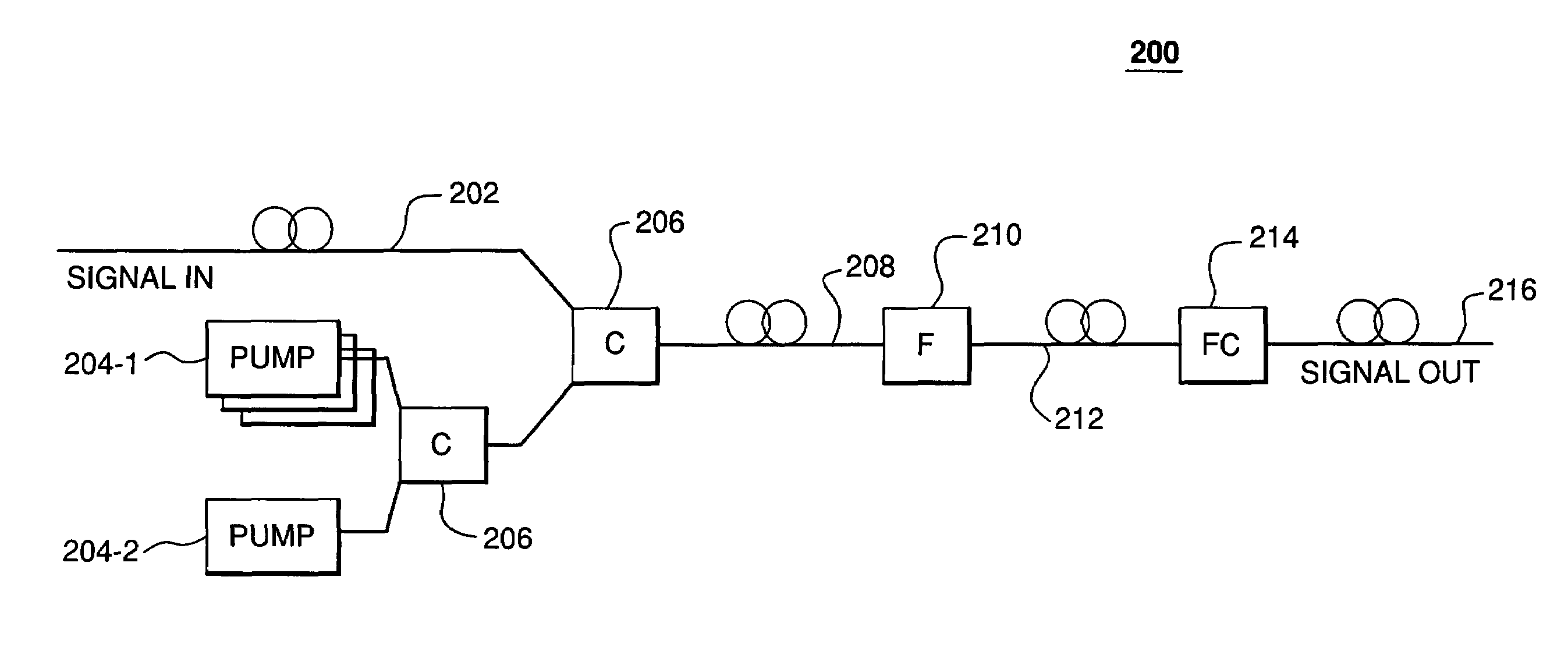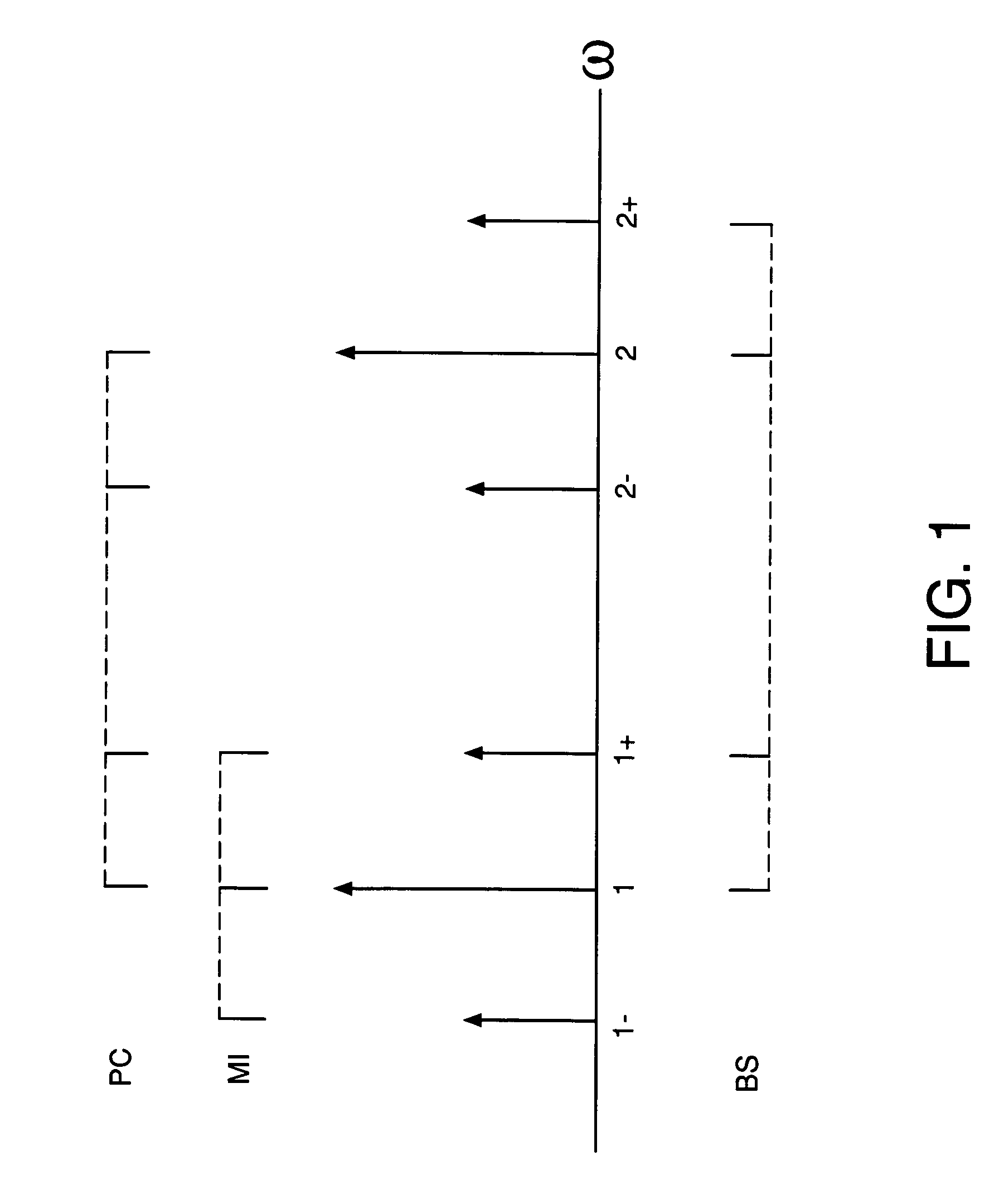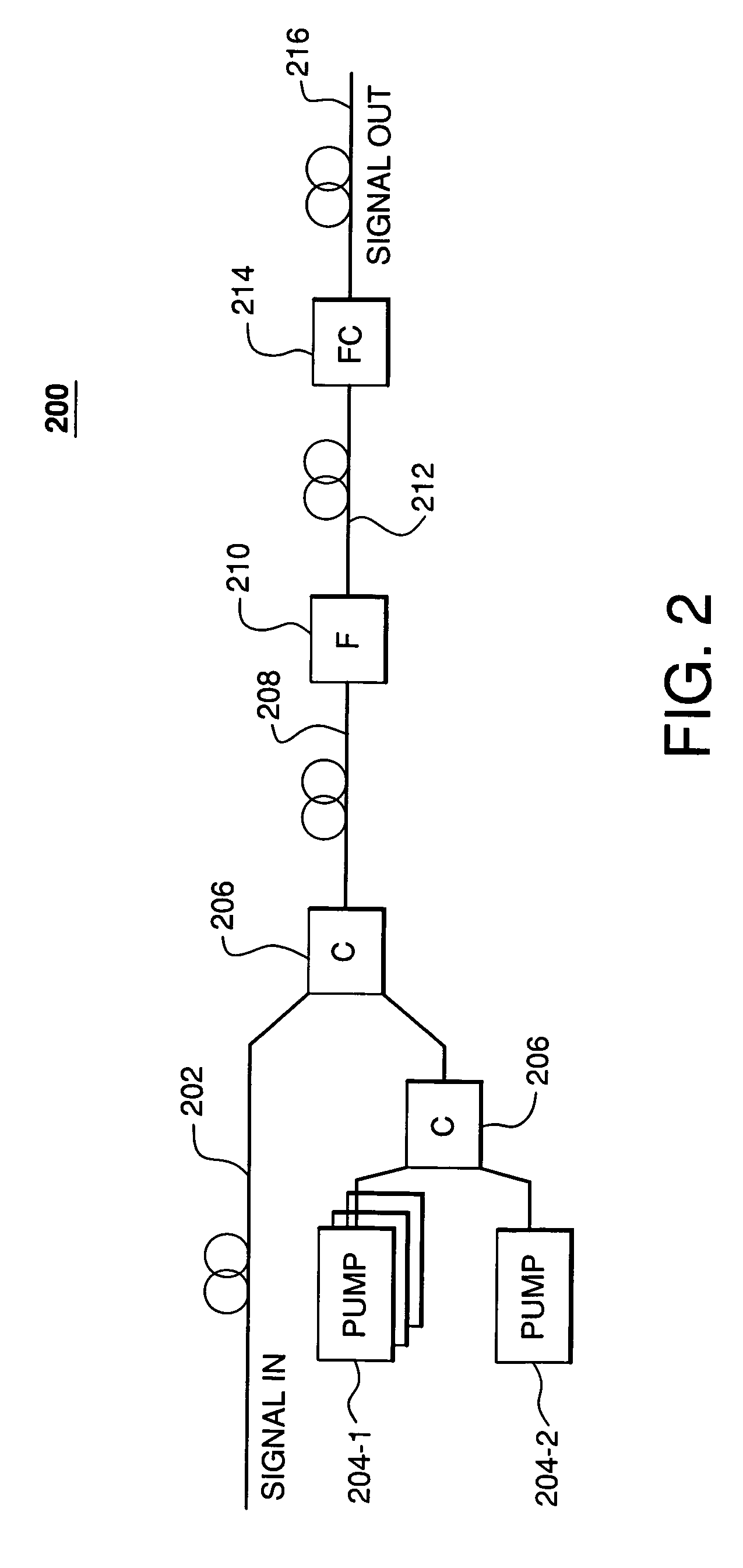Optical buffer employing four-wave mixing
a buffer and optical technology, applied in optics, instruments, electromagnetic transmission, etc., can solve problems such as the delay of idler signals relative to input signals
- Summary
- Abstract
- Description
- Claims
- Application Information
AI Technical Summary
Benefits of technology
Problems solved by technology
Method used
Image
Examples
Embodiment Construction
[0026]FIG. 2 shows a block diagram of an optical buffer 200, according to one embodiment of the present invention. Optical buffer 200 comprises two pumps 204-1 and 204-2, two couplers 206, four-wave-mixing (FWM) fiber 208, filter 210, dispersive fiber 212, and (optional) frequency converter 214. In the context of FIG. 1, couplers 206 combine pump waves ω1 and ω2 from pumps 204-1 and 204-2, respectively, with input signal ω1+ from input fiber 202 for transmission through FWM fiber 208. Note that the two two-way couplers 206 could be replaced by a single three-way coupler. FWM fiber 208 is any suitable fiber that supports Bragg scattering (BS), such as a suitable highly nonlinear fiber (HNF) or a photonic crystal fiber (PCF). To provide high-efficiency BS-based frequency conversion, FWM fiber 208 and the pump wave frequencies are selected such that ω0, the zero-dispersion frequency (ZDF) of the fiber, is approximately equal to (ω1++ω2) / 2.
[0027]Within FWM fiber 208, BS converts some (i...
PUM
| Property | Measurement | Unit |
|---|---|---|
| length | aaaaa | aaaaa |
| optical | aaaaa | aaaaa |
| frequency | aaaaa | aaaaa |
Abstract
Description
Claims
Application Information
 Login to View More
Login to View More - R&D
- Intellectual Property
- Life Sciences
- Materials
- Tech Scout
- Unparalleled Data Quality
- Higher Quality Content
- 60% Fewer Hallucinations
Browse by: Latest US Patents, China's latest patents, Technical Efficacy Thesaurus, Application Domain, Technology Topic, Popular Technical Reports.
© 2025 PatSnap. All rights reserved.Legal|Privacy policy|Modern Slavery Act Transparency Statement|Sitemap|About US| Contact US: help@patsnap.com



